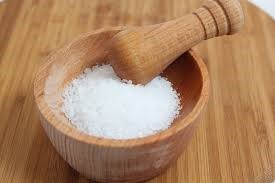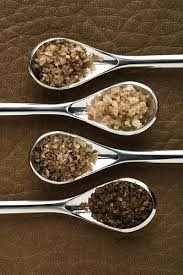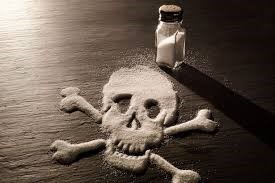The Good, the Bad, and the Salt
Salt has been given a bad rap in the last few decades. However, the public is more recently hearing about how it is actually a vital part of our diets, especially for athletes.
Ingesting too much salt has been associated with high blood pressure, which can damage the heart and blood vessels and increase the risk of a heart attack and stroke. For decades, the U.S. government and the American Heart Association have recommended consuming less salt. But reduced consumption of salt has not been shown to reduce blood pressure and has not led to a decrease in heart attack and stroke in the U.S. population. Yet current guidelines still call for limiting salt intake to stay healthy. (Reference: https://www.acs.org)
So how much salt do we actually need to take to stay healthy?
It appears that the opinions of the experts are pretty mixed.
The popular belief that salt intake should be restricted all started in 1972 when a study was conducted examining the effects of dietary salt on rats. The study appeared to show increased salt intake was positively correlated with hypertension. But a closer look at the details of the study shows that the rats were given doses of salt equivalent to a human consuming more than 500g or 4.5 cups daily, when the average intake in the United States at the time was approximately 3.5g per day. The amount of consumption in the test was not an accurate reflection of human consumption, therefore the results were flawed.
In 1988 the INTERSALT study claimed to support this correlation. The study looked at various populations, taking their average salt intake and their average blood pressure. The study showed a few outliers with low salt intake and low average blood pressure, but generally a cluster of results showing no significant correlation between salt intake and blood pressure. It’s normal practice to remove outliers from a statistical analysis of results before searching for a correlation, however this wasn’t done in this study. Communities with a high level of physical activity, a diet low in saturated fat, and little or no alcohol consumption would skew the results. Blood pressure is affected by so many variables, from lifestyle factors such as stress levels, physical activity, and gender, to dietary factors such as caloric intake, potassium, and calcium. Salt or sodium is just one of these factors.
More recent studies have failed to show a correlation between salt intake and heart disease. The DASH (Dietary Approaches to Stop Hypertension) study shows that while a large reduction in salt intake may minimally lower blood pressure, there is no clear correlation between this reduced salt intake and a lowered risk of heart disease. Furthermore, a study from 2003 showed that American salt intake has barely changed in the past fifty years. In fact, more studies tend to support the idea that potassium and/or the ratio of potassium to sodium is actually more important than sodium levels alone when it comes to heart disease.
Even though it has been demonized somewhat, salt actually plays a pretty vital role in our bodies. So long as our kidneys function normally, our bodies are pretty good at regulating our fluid balance when we eat slightly more or less salt than required, but when we go beyond these levels it can be problematic, actually increasing the risk of cardiac-related death. Salt is particularly important for athletes to replace electrolytes lost during sweating, as well in the general population helping in the regulation of blood sugar and digestive processes.
(Reference: https://breakingmuscle.com)
Cutting back on salt can reduce blood pressure, but often, the change in blood pressure is small.
Salt directly affects other nutrients. For instance, consuming a lot of salt may cause more calcium to be excreted in the urine. Calcium is a mineral that helps to strengthen bones, so people on a high-salt diet may need more calcium to make up for the calcium lost (along with the excess sodium). Also, urinary calcium, the main constituent of kidney stones, is increased by a high salt diet. Therefore, a high-salt diet can lead to painful kidney stones. New research results suggest a low-sodium diet may stimulate the production of renin, an enzyme released by the kidneys. Renin plays a role in regulating the body’s water balance and blood pressure. Too much renin may harm blood vessels, and a high-sodium diet would help lower the amount of renin produced.
The U.S. dietary guidelines were established in the 1970s when relatively little information was available about dietary salt and health. For decades, the U.S. government and organizations, such as the American Heart Association, have recommended people consume less salt. Current dietary guidelines recommend no more than 2,300 mg of sodium—about a teaspoon of salt—per day for teens and adults. No more than 1,500 mg per day is recommended for groups at higher risk of heart disease, including African Americans and everyone over the age of 50.
Salt, especially the sodium ions (Na+) present in its NaCl structure, is essential to the functioning of every cell in our bodies. Compounds containing sodium and potassium are electrolytes, substances that dissolve in water and produce ions. The resulting solution conducts an electric current. In the human body, salt is excreted through urine and through sweat. Because salt is excreted from the body, it must be constantly replaced. Many processes require electrical signals for communication, especially in the nervous system, brain, and muscles. For example, sodium ions are necessary to generate those electrical signals. Too much sodium and too little fluid/water (which could indicate hypernatremia), or too little salt and too much fluid/water (which could indicate hyponatremia), can cause cells to malfunction, and, if taken to an extreme, can be fatal.
Potato chips, popcorn, pretzels, and nuts tend to contain a lot of salt. Many people find a salty taste pleasant, but salt does more than simply add saltiness. It can also enhance sweetness and hide unpleasant metallic or chemical flavors, rounding out the overall balance of flavors and improving the taste of food.
If you are athletic and eat a low-salt diet, you may be getting too little salt. However, if you eat a lot of processed foods, you may be getting more salt than you need. Blood tests can confirm your blood sodium level. If you discover that you eat too much salt, try to cut back on high-salt foods or add little or no salt to your food at the table. If food lacks flavor, enhance your food by adding herbs, spices, and vinegars.
You can estimate your daily intake of salt by paying attention to the nutrition labels on food. Some foods, including ready-to-eat foods such as items from the deli or bakery, are not required to have nutrition labels. If you eat a lot of these foods, or a lot of restaurant foods, it is harder to count your salt intake. However, you can find nutrition information for many restaurants, and deli and bakery items. Search for “nutrition information” and the name of the item. MyFitnessPal (www.myfitnesspal.com) also offers a free mobile app, and the online site lists nutrition information for thousands of products.

